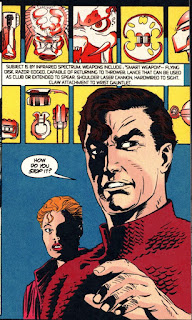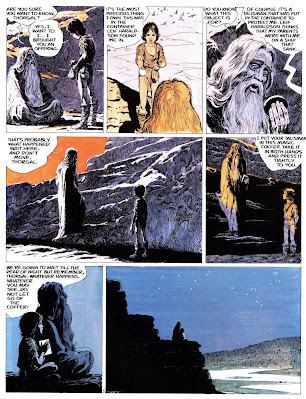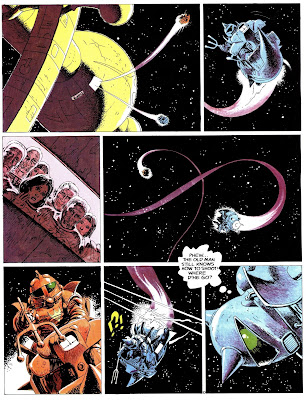Book Review: 'Night of the Cooters' by Howard Waldrop
1 / 5 Stars
'Night of the Cooters' first was published in hard cover by the small press publisher Ursus Imprints in 1990. This Ace Books paperback version (253 pp.) was issued in July 1993, and features cover art by Don Ivan Punchtaz.This is one of only three novels / anthologies by Waldrop to see print by a major paperback publisher (the other titles being The Texas Israeli War, 1974, and Them Bones, 1984), as the bulk of Waldrop's fiction pieces have been issued by small press publishers.
[ Copies of 'Cooters', being long out of print, have steep asking prices. I was able to get a battered copy for about $10. ]
The stories in 'Night of the Cooters' saw print previously in magazines like Omni, or other anthologies, such as Wild Cards, over the interval from 1977 to 1990.
My capsule summaries of the contents:
Night of the Cooters (1987): Invading Martians discover: you don't mess with Texas.
French Scenes (1988): in the near future, film school students use special software to create mashups contrived from selected segments of classic films. 'Scenes' is designed more to impress the reader with Waldrop's encyclopedic knowledge of film, than to tell an engaging story..........
The Passing of the Western (1989): an alternate-world treatment of How the West Was Won: in this case, through itinerant rainmakers who made the deserts bloom. Waldrop's decision to present the narrative through snippets of faux film magazine / fanzine interviews, including in-jokes about Forry Ackerman (?!) signals that he was trying too hard, to be too clever.
The Adventure of the Grinder's Whistle (1977): a decent Sherlock Holmes pastiche.
Thirty Minutes Over Broadway (1987): this was an entry in George R. R. Martin's Wild Cards shared-world anthology. In New Jersey in 1946, an Airboy derivative, named Jetboy, contends with unscrupulous men who have come into possession of a remarkably lethal alien weapon. It's competent, if unremarkable, proto-Dieselpunk, from a time when the word had yet to be invented.
The Annotated Jetboy (1986): an exhaustive listing, with definitions, of the cultural and technological allusions crammed into almost every paragraph of 'Thirty Minutes'.
Hoover's Men (1988): in an alternate 1929, Herbert Hoover is the head of the federal radio and television authority. A mild example of proto-dieselpunk.
Do Ya, Do Ya, Wanna Dance ? (1988): Frank Bledsoe participates in his 1968 Austin, Texas 20-year high school reunion. This story isn't science fiction, or even speculative fiction. It's a story about someone's high school reunion. I'm not impressed.
Wild, Wild Horses (1988): In Justinian-era Turkey, Renatus Vegetius strikes an unusual deal in order to get his hands on a most treasured book of knowledge.
Fin de Cycle (1990): a novelette comprised of vignettes in which various historical personages interact with one another in 1898 Paris. One of the chapters is titled 'We Grow Bored', and thus says all that can be said about this story...........
The verdict ? There's only one good story in this anthology, and it's 'Night of the Cooters'. All the other tales are duds. I can't recommend this book to anyone other than Waldrop fanatics.


























































.jpg)
.jpg)
















